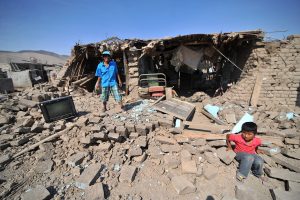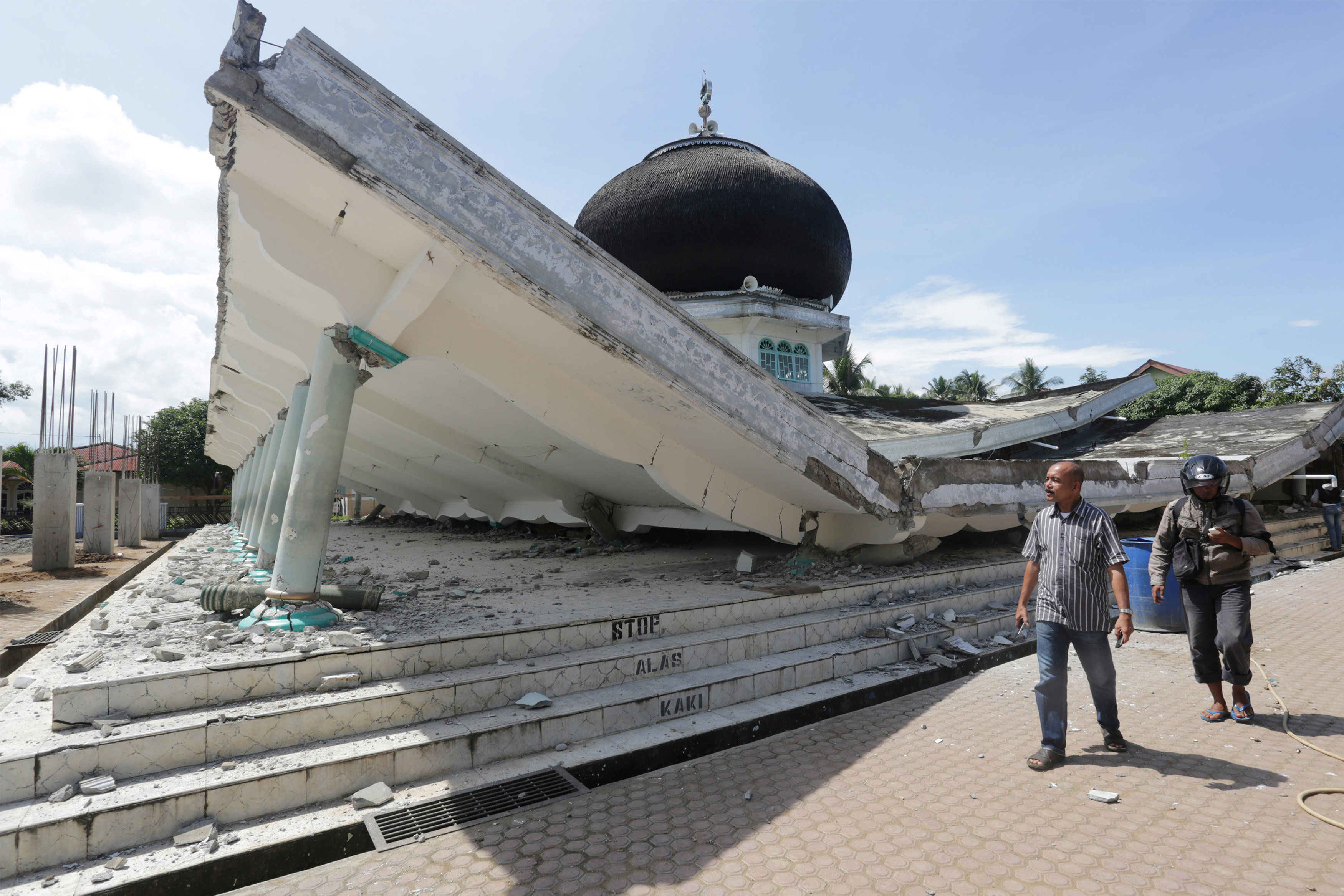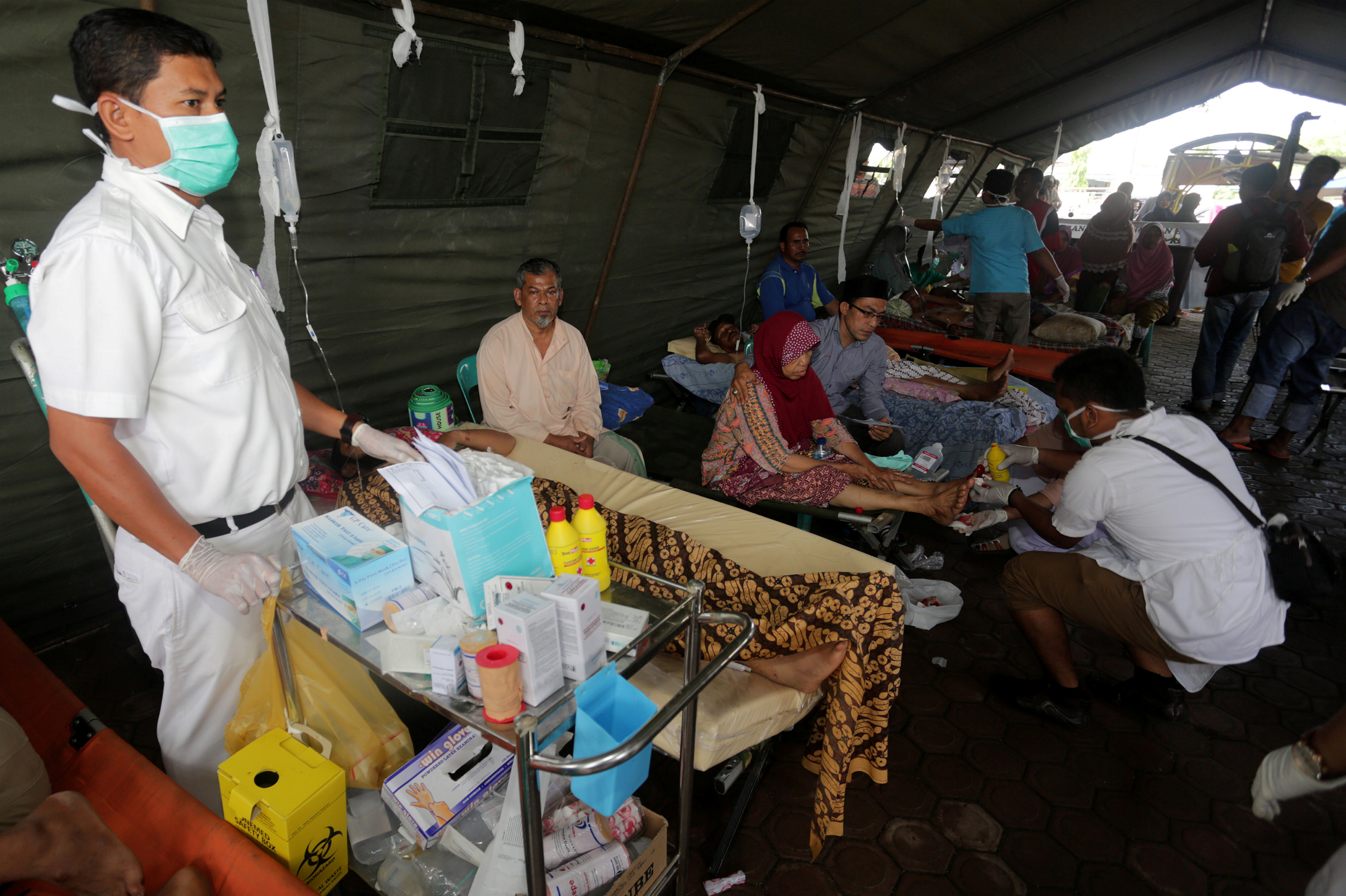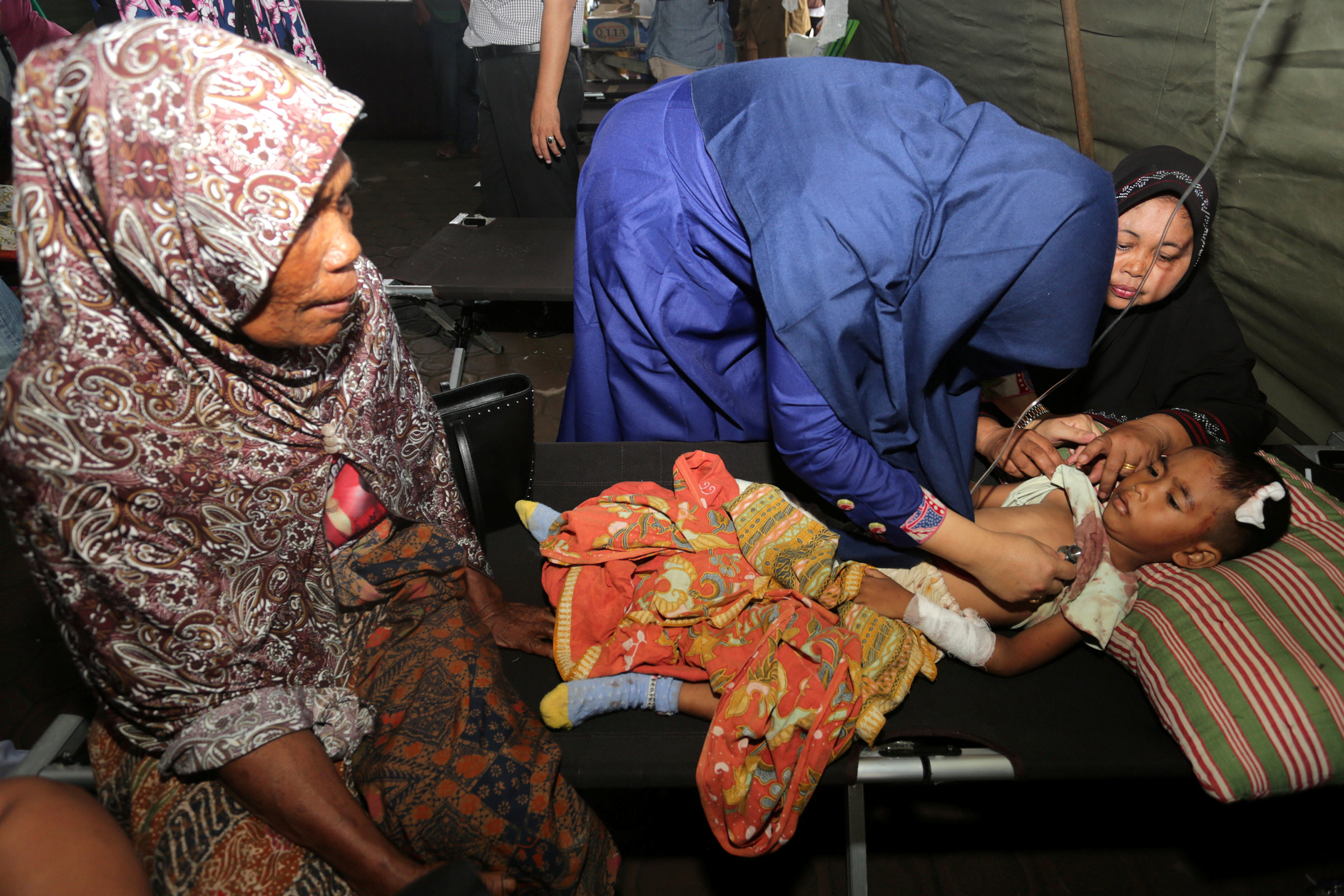
By Lincoln Feast and Charlotte Greenfield
WELLINGTON (Reuters) – New Zealand emergency services and defense personnel evacuated hundreds of tourists and residents from a small South Island town amid more strong aftershocks on Tuesday, a day after a powerful earthquake killed two people.
The 7.8-magnitude tremor struck just after midnight on Sunday, destroying farm homesteads, sending glass and masonry toppling from buildings in the capital, Wellington, and cutting road and rail links throughout the northeast of the ruggedly beautiful South Island.
As aftershocks continued to rattle the region, emergency services cordoned off streets in Wellington and evacuated several buildings due to fears one of them might collapse.
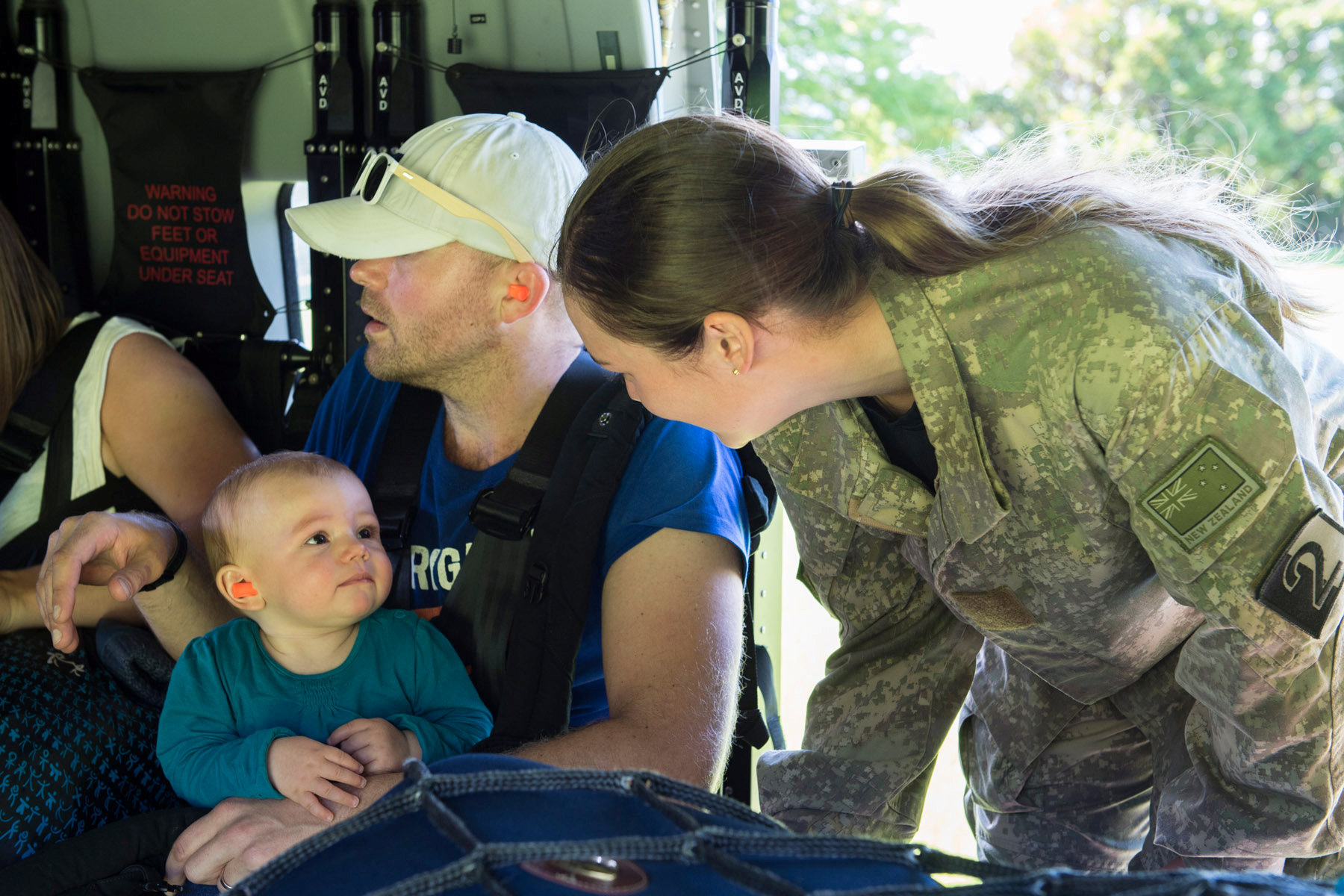
A Royal New Zealand Air Force member (R) helps evacuate a toddler and others aboard an NH90 helicopter from Kaikoura on the South Island of New Zealand November 15, 2016, stranded following the recent earthquakes. Sgt Sam Shepherd/Courtesy of Royal New Zealand Defence Force/Handout via REUTERS
Wellington Mayor Justin Lester said the vacant building appeared to have suffered structural damage when the land it was on subsided in the quake. A fire service official said a major structural beam had “snapped like a bone”.
The town of Kaikoura, a popular base for whale-watching about 150 km (90 miles) northeast of Christchurch, the South Island’s main city, remained cut off by massive landslips.
Four defense force helicopters flew in to the town on Tuesday morning and two Navy vessels were heading to the area carrying supplies and to assist with the evacuation, Air Commander Darryn Webb, acting commander of New Zealand joint forces, told TVNZ.
“We’re looking to do as many flights as we can out of Kaikoura today,” he said.
Around 400 of the 1,200 tourists stranded in the town were flown out on Tuesday, including 12 people with a variety of injuries, officials said.

Landslides block State Highway One near Kaikoura on the upper east coast of New Zealand’s South Island following an earthquake, November 14, 2016. Sgt Sam Shepherd/Courtesy of Royal New Zealand Defence Force/Handout via REUTERS –
The Red Cross, which used defense force helicopters to bring in emergency generators, satellite communications and water bladders, said water in the town was running out.
Mark Solomon, a leader of South Island indigenous Maori Ngai Tahu tribe, which has tourism and fisheries businesses around Kaikoura, said the local marae (Maori meeting place) had received 1,000 people since Monday morning. Many slept overnight in the communal hall or in vehicles outside.
The tribe had fed them with crayfish, a delicacy for which the South Island town is famous. With no power, the tanks that hold the expensive crustaceans had stopped pumping.
“It’s better to use the food than throw it in the rubbish so we sent it up to the marae to feed people,” Solomon told Reuters by phone.
AFTERSHOCKS, WIND AND RAIN
China chartered four helicopters to evacuate around 40 nationals from Kaikoura, mostly elderly and children, late on Monday, said Liu Lian, an official at the Chinese Consulate in Christchurch.
One Chinese national had been treated for a minor head injury in Kaikoura’s hospital, Liu said, and around 60 others would be evacuated on Tuesday.
“They have been trapped in Kaikoura for a couple of days, some are maybe scared, they have some mental stress,” Liu told Reuters. Many planned to continue journeys to other parts of New Zealand, Liu said.
Other tourists also said they planned to continue their trips, and travel agencies said they hadn’t noticed a drop off in bookings, easing concerns about a major hit to the sector, New Zealand’s biggest export earner.
Gale-force winds and rain were hampering recovery efforts, and hundreds of aftershocks continued to rock the region. A 5.4 tremor was among the bigger aftershocks and was felt strongly in Wellington.
Finance Minister Bill English said the government was well positioned to deal with the expected repair bill of billions of dollars, with low debt and budget surpluses.
“We are in about as good a shape as we could be to deal with this natural disaster,” English told parliament.
Civil Defence estimated 80,000-100,000 landslides had been caused by the quakes.
New Zealand media reported that three cows filmed stranded on a small patch of grass surrounded by landslips near Kaikoura had been rescued by a farmer.
Acting Civil Defence Minister Gerry Brownlee said New Zealand had accepted an offer of two U.S. Navy helicopters from the destroyer the USS Sampson, as well as an offer of help from the Japanese military.
It was hoped an inland road to Kaikoura from the south could be reopened by the weekend, he said.
Workers earlier began returning to office buildings in Wellington’s business district, which was closed off on Monday while the risk to buildings was assessed.
Several blocks were damaged, including the offices of Statistics New Zealand, which halted the release of economic data and said it would be months before it could use the building.
An A-League soccer match scheduled for Saturday between the Wellington Phoenix and Australia’s Melbourne Victory has been postponed because of damage to Wellington’s 34,000-seat Westpac Stadium, officials said.
New Zealand lies in the seismically active “Ring of Fire”, a 40,000-km arc of volcanoes and oceanic trenches that encircles much of the Pacific Ocean.
Christchurch is still recovering from a 6.3 magnitude quake in 2011 that killed 185 people.
(Additional reporting by Swati Pandey and Nick Mulvenney in SYDNEY; Editing by Paul Tait)

